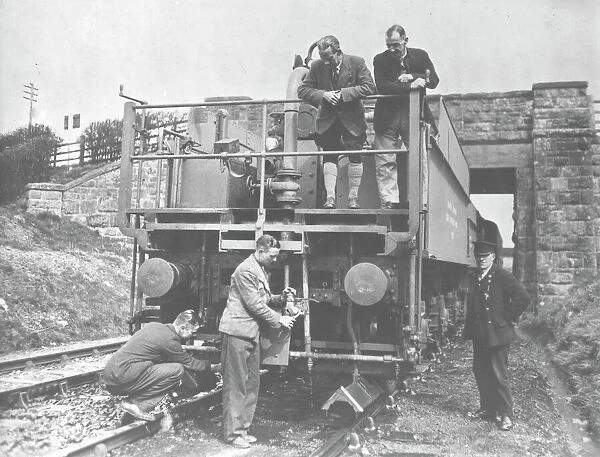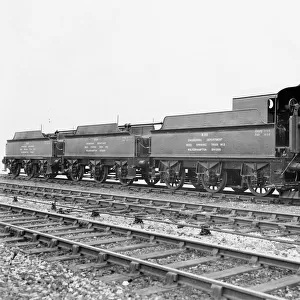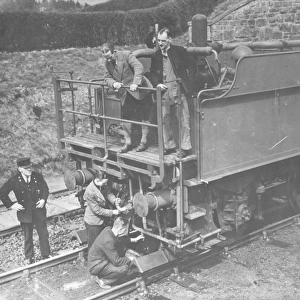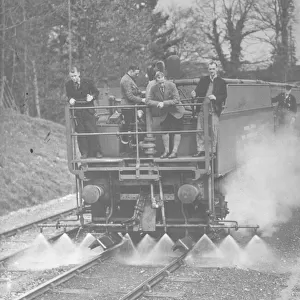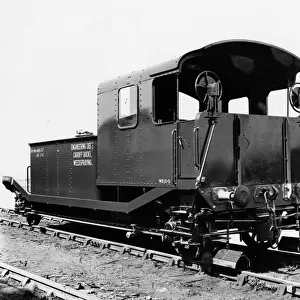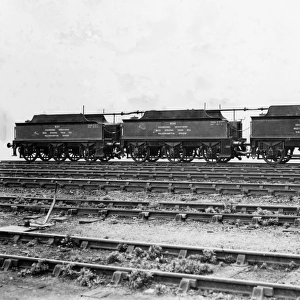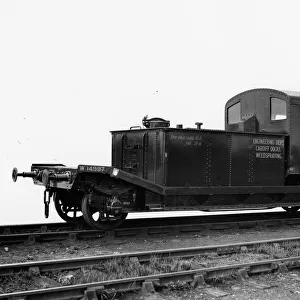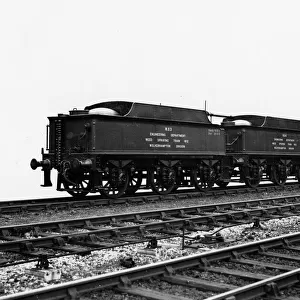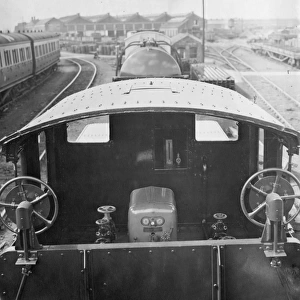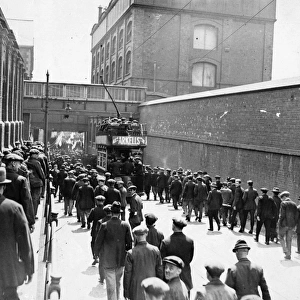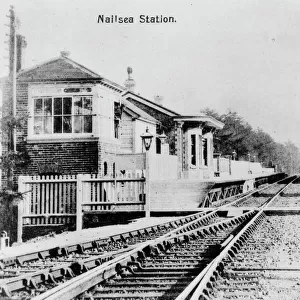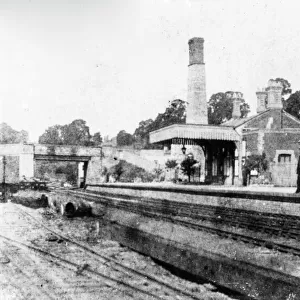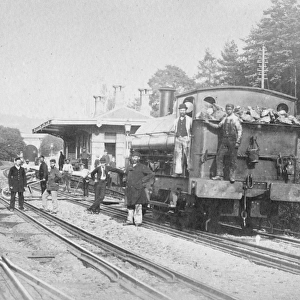Rights Managed > STEAM Museum of the GWR > Carriages and Wagons > Weedkilling Trains
GWR Weed Killing Train, 1938
Filename: HPX 058.jpg
Size: 3162 x 2406 (1.7MB)
Date: 16th May 2016
Source: STEAM Museum of the GWR
© STEAM Museum of the GWR
![]()

Wall Art and Photo Gifts from STEAM Museum
GWR Weed Killing Train, 1938
To operate smooth running services the GWR needed to keep their tracks and tracksides free of unwanted weeds and foliage. The GWRs weedkilling trains usually consisted of an engine and three tenders. The tenders held water which was mixed with the weedkilling solution held in a separate tank. It was then sprayed out the back onto the tracks with jets
STEAM - Museum of the Great Western Railway
Media ID 12100234
© STEAM Museum of the GWR
1930s Weedkilling Weeds Weedkiller
FEATURES IN THESE COLLECTIONS
> Carriages and Wagons
> Weedkilling Trains
EDITORS COMMENTS
In this print from the STEAM Museum of the GWR, we are transported back to 1938 and given a glimpse into the meticulous efforts undertaken by the Great Western Railway (GWR) to maintain their tracks and ensure smooth running services. The image showcases a remarkable piece of engineering - the GWR Weed Killing Train. Comprised of an engine and three tenders, this specialized train was specifically designed to combat unwanted weeds and foliage that could potentially hinder railway operations. Each tender held water while a separate tank contained a potent weed-killing solution. As the train moved along the tracks, jets at its rear sprayed this mixture onto both sides, effectively eliminating any encroaching vegetation. This photograph not only highlights the innovative approach employed by GWR but also serves as a testament to their commitment in providing efficient transportation services during that era. It is fascinating to witness how technology was harnessed for such practical purposes even before modern advancements were available. The attention to detail exhibited by GWR in maintaining their infrastructure is truly commendable. This image offers us an opportunity to appreciate not just their dedication but also provides insight into historical practices within railway maintenance during the 1930s. Overall, this print captures an intriguing moment in time when ingenuity met necessity on Britain's railways, reminding us of how every aspect of operation played a vital role in ensuring seamless travel experiences for passengers across the country.
MADE IN THE USA
Safe Shipping with 30 Day Money Back Guarantee
FREE PERSONALISATION*
We are proud to offer a range of customisation features including Personalised Captions, Color Filters and Picture Zoom Tools
FREE COLORIZATION SERVICE
You can choose advanced AI Colorization for this picture at no extra charge!
SECURE PAYMENTS
We happily accept a wide range of payment options so you can pay for the things you need in the way that is most convenient for you
* Options may vary by product and licensing agreement. Zoomed Pictures can be adjusted in the Cart.

